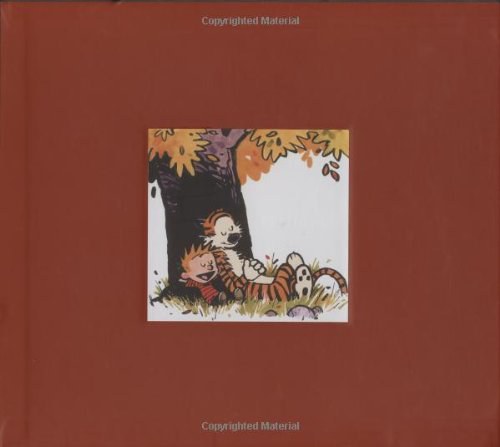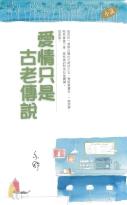
Avron Boretz《Gods, Ghosts, and Gangsters》
书刊介绍
内容简介
Demon warrior puppets, sword-wielding Taoist priests, spirit mediums lacerating their bodies with spikes and blades—these are among the most dramatic images in Chinese religion. Usually linked to the propitiation of plague gods and the worship of popular military deities, such ritual practices have an obvious but previously unexamined kinship with the traditional Chinese martial arts.
The long and durable history of martial arts iconography and ritual in Chinese religion suggests something far deeper than mere historical coincidence. Avron Boretz argues that martial arts gestures and movements are so deeply embedded in the ritual repertoire in part because they iconify masculine qualities of violence, aggressivity, and physical prowess, the implicit core of Chinese patriliny and patriarchy. At the same time, for actors and audience alike, martial arts gestures evoke the mythos of the jianghu, a shadowy, often violent realm of vagabonds, outlaws, and masters of martial and magic arts. Through the direct bodily practice of martial arts movement and creative rendering of jianghu narratives, martial ritual practitioners are able to identify and represent themselves, however briefly and incompletely, as men of prowess, a reward otherwise denied those confined to the lower limits of this deeply patriarchal society.
Based on fieldwork in China and Taiwan spanning nearly two decades, Gods, Ghosts, and Gangsters offers a thorough and original account of violent ritual and ritual violence in Chinese religion and society. Close-up, sensitive portrayals and the voices of ritual actors themselves—mostly working-class men, many of them members of sworn brotherhoods and gangs—convincingly link martial ritual practice to the lives and desires of men on the margins of Chinese society. This work is a significant contribution to the study of Chinese ritual and religion, the history and sociology of Chinese underworld, the history and anthropology of the martial arts, and the anthropology of masculinity.
作品目录
Acknowledgments
Note on Translation and Use of Foreign Terms
Chapter 1 Introduction
Chapter 2 Violence, Honor, and Manhood
Chapter 3 Taidong: The Mountains and Beyond
Chapter 4 Fire and Fury
Chapter 5 Tales from the Jianghu
Chapter 6 Wine, Women, and Song
Chapter 7 Conclusion: Faces of the Gods
Notes
Glossary
Bibliography
Index
About the Author
相关推荐
-

嫉妒的制陶女
嫉妒的制陶女 本书特色作者在书中给我们讲述了印第安人各个族群关于陶器、夜鹰、树懒的各种各样的神话传说。在分析和研究这些神话时,他概括了印第安神话的三大主题,即食...
-

水之道与德之端:中国早期哲学思想的本喻
水之道与德之端:中国早期哲学思想的本喻 本书特色 《水之道与德之端:中国早期哲学思想的本喻(增订版)》:艾兰文集之三水之道与德之端:中国早期哲学思想的本喻 内容...
-

哲学纲要-最新修订版
哲学纲要-最新修订版 本书特色 全书由《伦理学纲要》、《认识论纲要》、《存在论纲要》三部分组成。即将李泽厚先生各著作中关于伦理学、认识论和存在论的部分摘取汇编而...
-

陀思妥耶夫斯基
陀思妥耶夫斯基 本书特色 “大家小书·译馆”是北京出版集团人文精品丛书“大家小书”外国文化板块,秉承“大家小书”的理念,不忘“大家写给大家看的书”的初衷,精选有...
-
![[日] 小林正美《六朝道教史研究》](http://oss.shudanhao.com/caiji/chazidian/2023/35000.jpg)
[日] 小林正美《六朝道教史研究》
这本书的研究对象主要是东晋、宋时期的中国道教史,作者从文献考证的角度,对当前道教的“道流”:江南地区的葛氏道、上清派、从
-

王国维儒学论集
王国维儒学论集 内容简介 本书主要内容包括:经学概论、论性、释理、原命、孔子之学说、孔子之美育主义、子思之学说、孟子之学说、孟子之伦理思想一斑等。王国维儒学论集...
-

发生认识论原理
发生认识论原理 本书特色 让·皮亚杰(jeanpiaget1896-1980)是瑞士心理学家和哲学家,对生物学、哲学、心理学和逻辑学都有精湛的研究。他自1921...
-

查拉图斯特拉如是说·英文
查拉图斯特拉如是说·英文 本书特色 在《查拉图斯特拉如是说》(英文版)中,“上帝死了”,“超人”诞生了,于是近代人类思想的天空有了一道光耀千年的奇异彩虹。查拉图...
-

普通逻辑
普通逻辑 本书特色 本教材是全国高等教育自学考试行政管理专业必修课教材,也是文科各相关专业公共基础课程的指定教材之一,按照该课程2010年新修订的自学考试大纲进...
-

冰鉴-图文珍藏版
冰鉴-图文珍藏版 本书特色 近人乃有以古相书《冰签》,博以文正名,号为遗著,不知此书道光间吴荷屋已为锓版。 ——黄濬(1937年) 有人说,清代中兴名臣曾国藩十...
-

维吾尔族萨满文化遗存调查
维吾尔族萨满文化遗存调查 内容简介 在几乎所有的现代维吾尔族生活的地区,都可以遇见以各种名义进行算卦、跳神或通过巫术向人们传达神鬼之意愿,并在它们的帮助...
-

圆融的智慧:做个会说话的聪明人
圆融的智慧:做个会说话的聪明人 本书特色 立意新颖、剑走偏锋,一语点中时下处世中的要害,很容易引起读者的共鸣,再加上指导性和可操作性强,市场前景比较乐观。实话如...
-

佛门修持治病秘法
佛门修持治病秘法 内容简介 本书分修持篇和治病篇,内容包括:禅净密法、人道是本、佛语注释、三贤十地、明理念佛、三足鼎立、明理修持、修法要诀、弘法证道、观照修心等...
-

知识与语境(当代西方知识论对怀疑主义难题的解答)
知识与语境(当代西方知识论对怀疑主义难题的解答) 内容简介 对怀疑主义进行研究是十分有意义的。康德把怀疑主义问题的未决看作“哲学的耻辱”,奎因则指出:“休谟的困...
-

心是菩提-佛学中的人生哲学课
心是菩提-佛学中的人生哲学课 本书特色 本书,在深刻集会佛教禅学精义的基础上,对千百年来流传下来的禅人禅事、禅思禅语,进行深入的挖掘,精选了数百余则流传千年的佛...
-

西方哲学简史:面向21世纪课程教材
西方哲学简史 本书特色 我们选择的哲学问题是人类心灵思考的永恒问题,历史上和现实中的哲学家提出了一个又一个的答案,但一个接着一个被推翻、被修改、被重写。哲学史展...
-

如何进行批判-孟子的愤怒与苏格拉底的忧伤
如何进行批判-孟子的愤怒与苏格拉底的忧伤 本书特色 本书反思了我国传统的批判方式和说理方式,通过比较孟子与苏格拉底的批判方式,试图将苏格拉底的合作式批判方式融入...
-

季羡林真实人生
季羡林真实人生 本书特色 年轻时习得人生大智慧 前行中不一样的思考与洞察本书为“人生之思”丛书之一。与另外两本(朱光潜、冯友兰)书相同之处在于:都是学贯...
-
![[奥地利] 勒内·德·内贝斯基·沃杰科维茨《西藏的神灵和鬼怪》](http://oss.shudanhao.com/caiji/chazidian/2023/35341.jpg)
[奥地利] 勒内·德·内贝斯基·沃杰科维茨《西藏的神灵和鬼怪》
《西藏的神灵和鬼怪》内容有:保护神(护法神)的形貌;护法神的分类、形貌和标志;出世间护法神;班丹拉姆女神;太黑护法;多闻子
-

中国哲学史新编:中
中国哲学史新编:中 内容简介 本书内容包括汉初黄老之学,汉初*大的政论家和哲学家——贾谊,纬书中的世界图式,古文经学的兴起及其哲学家——刘歆、扬雄、桓谭,东汉末...





